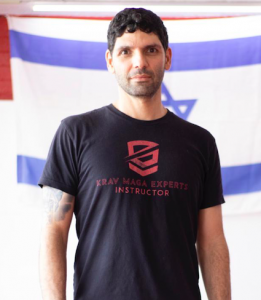At 6, well before his service in the Israeli military, Tsahi Shemesh was already engaged in hand-to-hand combat, the Israeli self-defense training called Krav Maga. “My parents were interested in encouraging me to be self-confident. I loved it.”
Krav Maga is a self-defense system that keeps on changing and developing daily and is known today to be the most complete and realistic self-defense system in the world today.
Today, at 40, Shemesh is the owner of two Krav Maga studios in NYC. His first studio of Krav Maga Experts opened in 2010 on Broadway and 100th Street on the Upper West Side; the other is in Park Slope. In both, he is offering the training he once taught in the military. Empowerment has no age limits; his oldest student is 80. The youngest is two years old. “More than 50 percent of my students are women,” he said. “I’m here to show people how strong and amazing they can be.”
He explained that there is a significant difference in teaching this self-defense practice to children and adults, including those managing PTSD and trauma, compared with teaching soldiers. This hinges on the basic goal. For civilians, it’s to develop the strength and focused thinking that allows students to have confidence in their ability to fight and to gain the willpower and strength of purpose to disengage from a potential fight. In the military, all bets are off. You have the training to subdue a terrorist with your hands if all else fails.
Shemesh explained that the key to the training is strengthening the whole body and learning to match your basic instincts with how you will react in a crisis situation. There are no rules and no traditional form. Shemesh emphasizes disengaging is the first priority. “We should exhaust all peaceful options before engaging in a fight.”
Does he have stories of students who’ve found their training useful in New York City when confronted on the subway or on a city street? “Yes, every day,” he said. One student, a young woman, was accosted on the street by a man who put his hand under her skirt. Remarkably, after just a few hours of training, she reacted instinctively and defended herself well. She surprised both the groper and herself. He ran away.” The woman then called Shemesh, asking if she had done enough. I told her, “he didn’t harm you; you won.” Students always ask, “Am I good?” and “How long will it take for me to be good?” It takes time, according to Shemesh. For some months, for others, commanding and directing their body may come more naturally. When he gets a call from the mother of a girl about to go to college, hoping that one class will be useful to keep her safe, he replies, “Learning how to defend yourself is like learning a new language. It won’t happen overnight.”
Recognizing the anxiety common among urban community residents related to vulnerability in the face of violence, Shemesh has taken on the challenge of making Krav Maga more widely known. As Executive Producer, He’s currently halfway through the production of a documentary. The film details the positive impact of Krav Maga training on mental and physical health through the experience of a number of Shemesh’s students. Throughout the narrative, the development of skills is linked to building self-confidence, self-worth and competence.
Specialized training? Yes, Shemesh teaches the moves to actors for their hero roles in your favorite Marvel movies alongside training in shelters for the victims of domestic abuse. Shemesh has also just finished writing two books related to his field. One is a children’s book with the theme of making better choices. The other, for adults, is about being resilient.
“The Krav Maga self-defense discipline is not a sport or martial art,” said Shemesh. Its history is rooted in the trauma of WWII, along with the commitment and courage to be the best one can be to save one’s own life and the lives of others.
How did it all start? According to an entry in Martial Arts of the World Encyclopedia about the hand-to-hand combat method, and further details in The Guardian, Krav Maga was developed in Czechoslovakia in the 1930s by Imre (Imi) Lichtenfeld, who was from a Jewish family. He first taught his fighting system in Bratislava in order to help protect the local Jewish community from the Nazis.
The account details that later, moving to Palestine, Lichtenfeld taught the discipline to members of the Haganah, the Jewish underground army. After the establishment of Israel in 1948, Lichtenfeld became the Chief Instructor of Physical Fitness and Krav Maga at the Israel Defense Forces (IDF) School of Combat Fitness. Krav Maga was Integrated into the Israeli army’s training program.
Imi’s students were the direct teachers of Shemesh. The lineage of the craft and the mission to keep all humans safe is at the core of Shemesh’s philosophy and practiced at Krav Maga Experts on West 100th Street.

 By
By